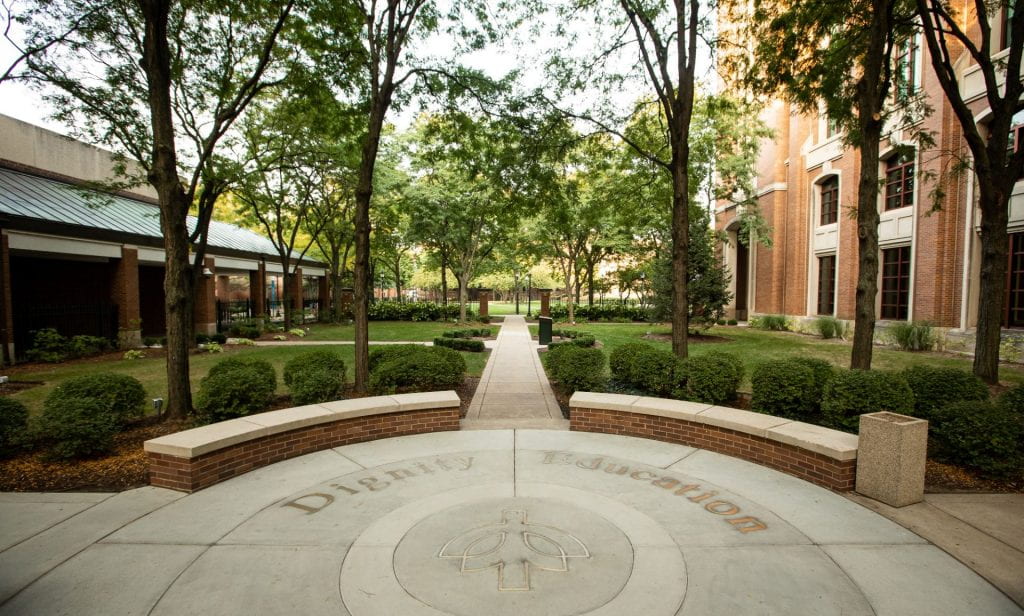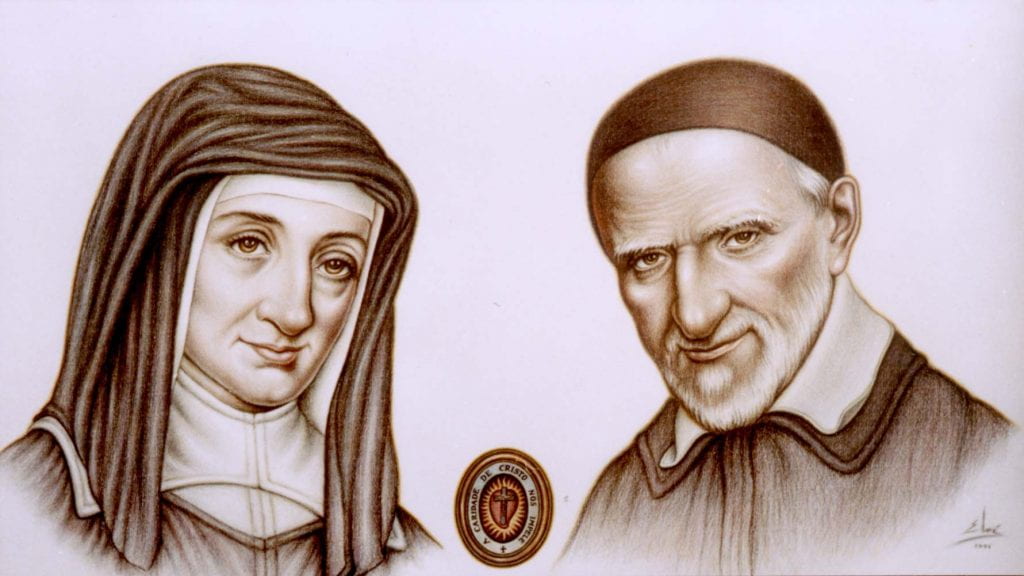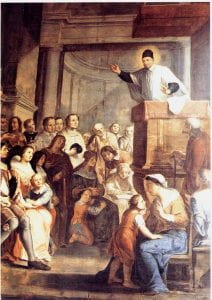
After 35 years, DePaul University has fully revised its mission statement. Through a 10-month participatory, historically grounded, yet forward-thinking process, direct feedback was gathered from over 600 community members. The updated concise statement is relevant and apt for the DePaul we all know, and for the DePaul of which we dream.
On March 4th, the revised DePaul University Mission Statement and its supporting document were approved unanimously by the Board of Trustees. The approval process went faster than an expected May timeframe. I believe this demonstrates that the participatory nature of the mission statement review process worked as we had hoped. It proves the value of shared governance in helping us to define a mutual understanding of who we are and how we want to live out our common mission in this historic moment.
The review process was a beautiful, concrete expression of communal discernment. While many may not realize it, our approach of inclusive reflection and community articulation of common dreams and values is very much in the spirit of Vincent de Paul and Louise de Marillac. As this process has achieved with many other institutions of the worldwide Vincentian Family, it both captured and embodied the Vincentian spirit so valued at DePaul.
Invitations to review the mission statement went out on Newsline and social media, through Colleges, departments, student groups, and administrative offices, via SGA and Faculty and Staff Councils. We listened to many voices at over 70 Dialogues. Many were impassioned and advocated for mission-related ideas that they felt were most important. I can say with confidence that great care was given to revising the statement, down to negotiating the meaning and inclusion of individual words. For instance, including “environmental” justice for students and others fiercely dedicated to sustainability. Or, discussing the wording “with special attention to” as all are served and all have agency, yet we must recognize our Vincentian legacy of reaching out especially to those most in need who are not well-served by systems. It is my belief that every word of the statement has deep meaning and that each word illustrates the common themes of DePaul’s mission that emerged clearly from the audiences we relied upon for community input.
DePaul stakeholders agreed that we are Catholic, Vincentian, and anchored in the global city of Chicago, and that our university educates the whole person in a variety of ways that uphold human dignity. Review participants insisted that DePaul commit to addressing the great societal challenges of our day as both an educational institution connected to local and global communities, and through our graduates whom we hope will be change agents for greater good as well as successful in their professions. The umbrellas of Vincentian personalism and professionalism express the culture and approach at DePaul that many feel differentiate it from other institutions. As we served an immigrant population in the late 1800s, so do we continue to educate underserved and underrepresented communities today.
Other values and core commitments that commonly emerged through the review process are summarized in the statement’s supporting document, “Distinguishing Characteristics, Core Values, and Commitments.” I am hopeful this document will be referenced by link in every online presentation of the new DePaul Mission Statement and I encourage you to read it.
The participatory review process was itself an education for the DePaul community. Before preparing for a dialogue or taking our survey, many of the participants had never read the full four-page mission statement. Many had never meaningfully discussed with colleagues or fellow students what DePaul’s mission meant to them or how they believed it must be communicated to remain relevant and compelling. A nearly universal desire became apparent for a new concise mission statement that could be fully known, embraced, and integrated into life at DePaul. This was also recommended to the university during the last Higher Learning Commission accreditation process. I hope the new statement fulfills that wish.
In many ways the statement review process—comprised of a rigorous four-phase approach of historical review, capturing mission in action through Seeds of the Mission videos, over 70 mission statement dialogues and survey responses, and the Board survey—seems completed after a year. But the work of the new mission statement has just begun.
It is time to begin sharing the statement broadly on websites, in syllabi, and on signage where it can be easily seen. Departments and areas need to reflect on their own internal mission and vision statements, and on their website and marketing language. We must integrate the language and ideas of the new DePaul Mission Statement and “Distinguishing Characteristics, Core Values, and Commitments” into our work. We must all attend to the ideals of the statement as more than just words on paper, but as a mission for which we are gathered that provides a central focus for what we do.
Thank you to all who participated in the review process. And thanks to all who will be enlivened by the new statement, making decisions in using it as a guide, holding DePaul accountable for living it, and celebrating our common Vincentian spirit. Together, We Are DePaul.
Rev. Guillermo (Memo) Campuzano, CM
Vice President of Mission and Ministry
Watch the Video on the Review of DePaul’s Mission Statement
DePaul University Mission Statement
Adopted by the Board of Trustees on March 4, 2021
As an innovative Catholic, Vincentian university anchored in the global city of Chicago, DePaul supports the integral human development of its students. The university does so through its commitment to outstanding teaching, academic excellence, real world experience, community engagement, and systemic change. DePaul prepares graduates to be successful in their chosen fields and agents of transformation throughout their lives.
Guided by an ethic of Vincentian personalism and professionalism, DePaul compassionately upholds the dignity of all members of its diverse, multi-faith, and inclusive community. Through education and research, the university addresses the great questions of our day, promoting peaceful, just, and equitable solutions to social and environmental challenges. Since its founding in 1898, DePaul University has remained dedicated to making education accessible to all, with special attention to including underserved and underrepresented communities.
Read our Distinguishing Characteristics, Core Values, and Commitments…



